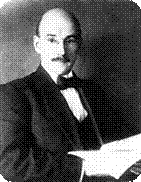New
Jersey
Number of victims
There
were no legal
sterilizations recorded in the state of New Jersey (Paul, p. 557).
Passage of law(s)
Although
New Jersey
did pass a sterilization law in 1911, by 1913 it was the first such statute
in the
nation to be declared unconstitutional (Paul, p. 556).
In Smith v. Board of Examiners the New Jersey
Supreme Court found that it violated the Fourteenth Amendment (Carlson,
p. 248). Declaring
it unlawful did not discourage
several organizations from continuously pushing for an amendment to be
made or
a new bill to be passed legalizing sterilizations (Dowbiggin,
p. 37). The
sterilization law that Harry
H. Laughlin proposed in 1914 was also rejected (Paul, p. 559).
Groups identified in the law
The
groups
identified in the 1911 law covered the “feeble-minded, epileptic,
criminals
convicted of rape and other crimes that under the law constitute
habitual
criminality” (Paul, p. 556).
Precipitating factors and processes
Although no law was passed, the
eugenics movement was very
alive in New Jersey as demonstrated by the fact that several attempts
were made
to legalize compulsory sterilization (Dowbiggin,
p.
37; Paul p. 559). Although
the state had
a high percentage of Catholics who were opposed to the movement, there
were
many who believed eugenics to be a genuine and necessary science (Dowbiggin, p. 38).
Psychiatrists and superintendents at the state institutions generally
agreed that a sterilization law would bring about “biological,
humanitarian,
and socioeconomic” improvements across the spectrum (Dowbiggin,
p. 37). They
reasoned that this would occur
because it would help to selectively decrease the chances of certain
genes
being passed on, it would allow patients to leave the institution
without fear
of becoming parents, and it would ideally save the “depression-era
government”
a considerable sum of money (Dowbiggin,
p. 36).
Major Proponents
Marian
Olden gained
public renown for her campaigns regarding the dissemination of birth
control as
well as for founding the Sterilization League of New Jersey and
advocating the
passage of bills legalizing eugenic measures (Dowbiggin.
pp. 35-36). She is
considered a
controversial figure because of how much she admired Nazi programs well into the late 1930s
(Dowbiggin,
p. 37). Many attribute the ultimate failure of her many
proposed sterilization bills to her abrasive and offensive way of
advertising
them to the public (Dowbiggin,
pp. 38-39).
 (Photo
origin: UC Davis, available at http://www.biotech.ucdavis.edu/TBCWebsites/TBC07/Forensics/Thatcher&Vejnovic-Benicia/site/history.html)
(Photo
origin: UC Davis, available at http://www.biotech.ucdavis.edu/TBCWebsites/TBC07/Forensics/Thatcher&Vejnovic-Benicia/site/history.html)
Henry H.
Goddard was
another leading proponent of the eugenics movement in
“Feeder institutions” and institutions where sterilizations are performed
 (Photo
origin: The Training School at Vineland, available at http://www.thetrainingschool.org/main.htm)
(Photo
origin: The Training School at Vineland, available at http://www.thetrainingschool.org/main.htm)
There were
at least ten mental health institutions in New Jersey by 1960
(Laughlin,
p. 80). Although none
of these institutions performed
compulsory sterilizations on their patients, the one in Vineland stands
out
because Henry H. Goddard worked as their director of research and based
his studies
on intelligence testing and the Kallikak
family on research directed from those
offices for several years (Gould, p. 188). This Institution has been
known
by many names; currently
it goes by The
Training School at Vineland and
is still operating today (The Training
School at Vineland). The
website of the Training School does not mention Goddard.
Opposition
The two
primary
sources of opposition to the passage of a compulsory sterilization law
were the
Roman Catholic Church and “organized medicine” (Dowbiggin,
pp. 38-39). The
Church was so successful
at blocking these bills in the Legislature because state politicians
knew that
they would ruin their careers if they voted against the wishes of their
primarily Catholic constituents (Dowbiggin,
p. 38). Many of those in
the
medical profession were
adverse to eugenic measures because they tended to have more
traditional
views. Because the
fertility rate was
actually dropping in the United States, most believed women should have
more,
not less, children (Dowbiggin,
p. 39).
Bibliography
Dakwa, Kwame.
2001. “The
Kallikak Family.”
Available at <http://www.indiana.edu/~intell/kallikak.shtml>
Dowbiggin, Ian. 2008. The Sterilization Movement and Global Fertility in the Twentieth Century. Oxford: Oxford University Press.
Goddard, Henry H. 1912. The Kallikak Family. New York: Macmillan.
Gould, Stephen Jay. 1996. The
Mismeasure of Man.
New York: Norton.
Laughlin, Harry Hamilton.
1922. Eugenical Sterilization in the
Paul,
Julius.
1965. "'Three Generations of Imbeciles Are Enough': State Eugenic
Sterilization Laws in American Thought and Practice."
The Training School at